Read Reviews
The Best Grass Seeds
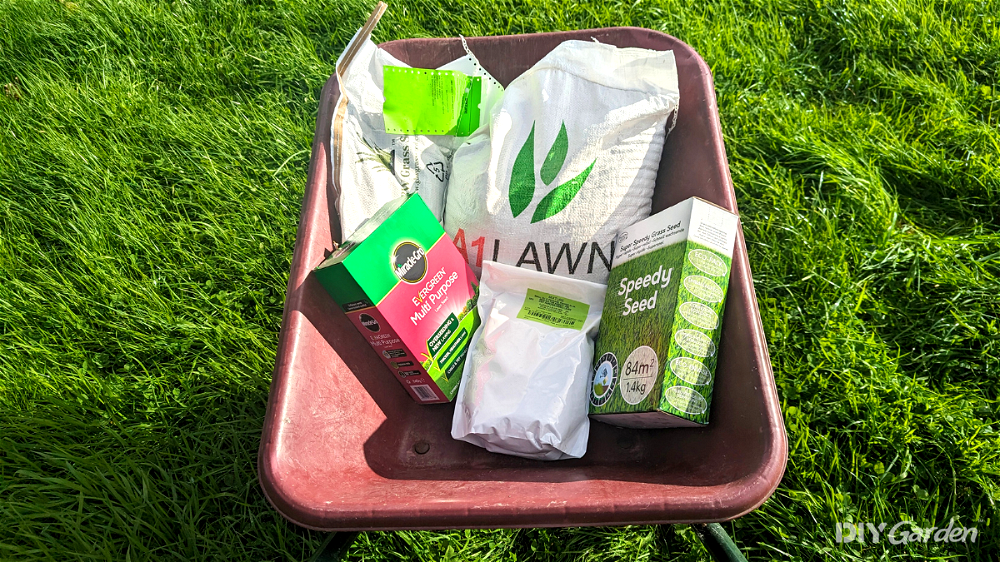
-
Fast growth & hardy - Gardeners Hard-Wearing Lawn Grass Seed
-
Great blend of grass species - GBW Premium Quality Grass Seed
-
Resilient even through winter - A1 Lawn Hard Wearing Grass Seed
-
Fastest growing - Pronto Seed Super Speedy Grass Seed
-
Easy to sow - Miracle-Gro EverGreen Multi Purpose Lawn Seed
Grass Seed Reviews
1. Gardeners Hard-Wearing Lawn Grass Seed
Fast growth & hardy
- Germinates in 15 days in poor conditions, outperforming many other grass seed mixes
- Grows faster and more vigorously than other grass seed mixes
- Comes in a resealable bag, making storage easy
- Only contains two types of grass, although they’re both perennial and hard-wearing
- Doesn’t come with any sowing instructions
- Visible Results
- 5 - 10 days
- Treatment Area
- 140 m²
- Size
- 5 kg
- Application
- Spreader or Hand
- Seed Quality
- 4
- Speed of Results
- 5
- Application Ease
- 4
- Value for Money
- 5
Gardeners Dream is a company that produces a wide range of gardening products, with one of these being the Gardeners Dream Hard-Wearing Lawn Grass Seed. I put its promise of a thick and lush lawn to the test by sowing it alongside four other grass seed mixes.
Let’s start by talking grass varieties. Unlike many other grass seed mixes, this one contains just two varieties of grass. The good news is that both are hardy perennials, with the fescue featuring finer leaves than the ryegrass, giving you a beautifully textured mix that’s both hard-wearing yet soft and comfortable enough to sunbathe on!
Both varieties are also known for their fast germination. Mine ended up taking 15 days to sprout, as opposed to the promised 5-10 days. However, to be fair, they were sown in mid-October in NE Scotland, meaning that the seeds definitely weren’t experiencing optimum conditions! Still, not only were they the second-fastest of the five mixes to germinate, but the growth of the grass after that outshone most of the rest, giving me a thick, green lawn.
If this is your first time sowing grass seed, you won’t appreciate the lack of instructions on the bag. Fortunately, the process is pretty similar no matter the type of grass seed you use, so find some instructions online to follow. Correctly storing leftover grass seed is important too, but that’s easy with this mix since it’s the only one that I tested that came in resealable packaging.
The mid-range price tag that this grass seed mix comes with makes it even more appealing. For the results that it provides, I would have been happy to pay more, making it great value for money.
Even though this grass seed didn’t end up being the fastest to germinate, it still ended up being my preferred mix out of the five that I tested. The dense and lush quality of the lawn coupled with its fast growth and undeniable hardiness in poor conditions makes the Gardeners Dream Hard-Wearing Lawn Grass Seed a mix that I would highly recommend!
Did you find this review helpful?
3. A1 Lawn Hard Wearing Grass Seed
Resilient even through winter
- The seed is certified by DEFRA, FERA, and SASA, proving its quality
- Grows steadily in poor conditions
- The 16-day germination period was within the advised timeframe but still longer than other grass seed mixes
- Some may find the 5kg bag heavy and cumbersome
- Visible Results
- 7 - 21 days
- Treatment Area
- 285 m²
- Size
- 10 kg
- Application
- Spreader or Hand
- Seed Quality
- 5
- Speed of Results
- 4
- Application Ease
- 4
- Value for Money
- 4
A1 Lawn is known for its lawn care expertise, so I was looking forward to giving the A1 Lawn AM Pro 25 Hard Wearing Grass Seed a try. To test it out fairly, I sowed a mini lawn of this seed alongside four other mini lawns featuring grass seed mixes from other companies.
This is another grass seed mix that contains just two varieties of grass. Both are robust perennials that will withstand poor conditions while still providing an aesthetically pleasing lawn. While most of the other grass seed mixes on this page are DEFRA-approved, this one has undergone additional certifications that showcase its quality.
The promised germination period for this grass seed is a realistic 7-21 days, and mine sprouted in 16, even though it was sown later than recommended. After this, it grew steadily through the winter. The covering of grass isn’t quite as thick as some of the other grass seed mixes that I tested, but it has still resulted in a respectable lawn.
One of the main downsides of this grass seed is that the minimum you can purchase is 5kg. This would be far too much if you only need a few handfuls to over-seed a lawn, especially since grass seed quickly deteriorates in storage. However, if you have a larger area to cover, the large bag would be an advantage. It does make things a little trickier when sowing due to the weight of the bag but the sowing process is still easy enough, with good instructions to follow.
Based on its price per gram, this seed is one of the least expensive of the five that I tested, although only slightly so. You would expect bigger savings when purchasing a bigger bag, but this isn’t the case. Still, judging by the results, it’s a fair price that offers good value for money.
When it comes down to it, the end result is what matters most when sowing a lawn, and this grass seed provides a good covering. It’s slightly sparser than some of the other grass seed mixes that I tested but the fact that the seedlings remained resilient through the worst of the winter is a testament to its vigour.
Did you find this review helpful?
4. Pronto Seed Super Speedy Grass Seed
Fastest growing
- Germinates in 2 weeks, even in poor conditions
- Clear instructions on the box are easy to follow
- Vigorous growth, giving you results much faster than other grass seed mixes
- Only contains ryegrass, giving you a hard-wearing but coarse lawn
- Contains annual ryegrass, which will die back after a year, leaving bare patches behind
- The box can’t be resealed, so extra seed will need to be stored in something else
- Visible Results
- 7 - 14 days
- Treatment Area
- 84 m²
- Size
- 1.4 kg
- Application
- Spreader or Hand
- Seed Quality
- 3
- Speed of Results
- 5
- Application Ease
- 5
- Value for Money
- 4
Pronto Seed is known for producing a vast selection of seeds, one of which is the Speedy Seed Grass Seed mix. I sowed this seed alongside four other brands to put it to the test.
While most grass seed mixes contain at least three different seed varieties, this one has just two. Both are hard-wearing but one of these is annual ryegrass – a grass that isn’t used in any of the other mixes that I tested. Why? Because its lifespan is only one year. Once the annual ryegrass dies off, it won’t return, leaving those patches of lawn bare until either the perennial ryegrass takes over or you decide to over-seed.
The advantage of using these two grass varieties lies in their fast germination. Even though conditions were poor and I was sowing the seed later than advised, the seeds sprouted in 14 days, making them the fastest to germinate of the five mixes that I tested. As the months went on, growth continued to be strong, resulting in this one being the thickest, greenest, and lushest of the five lawns.
The actual sowing process was simple, thanks to the clear instructions provided on the box. However, the box can’t be resealed, so any extra seed will need to be stored elsewhere as keeping them airtight is crucial for their shelf life.
With this seed offering such impressive results, its price seems like a steal. With that said, take into account the fact that you may need to over-seed a year later once the annual ryegrass dies back – this will add to the overall cost of your lawn.
All in all, I can see why this seed mix is named as such – if you want a speedy lawn, Pronto Seed’s Speedy Seed is the grass seed to go for. It may not provide the same level of longevity as some of the other grass seed mixes but, so long as you’re aware of this from the start, you won’t be disappointed.
Did you find this review helpful?
- Clear instructions on packaging, with a sprinkler integrated into the box for easy sowing
- A good mix of hard-wearing and finer grass varieties
- Germination takes 2-3 weeks in less-than-ideal conditions
- The box can’t be resealed - extra seed will need to be stored in a separate container
- Growth isn’t as vigorous as other grass seed mixes, resulting in a patchier lawn
- Costlier than other brands
- Visible Results
- 5-14 days
- Treatment Area
- 56 m²
- Size
- 1.68 kg
- Application
- Spreader or Hand
- Seed Quality
- 4
- Speed of Results
- 3
- Application Ease
- 5
- Value for Money
- 3
If you’re looking to establish a lawn as quickly as possible, the Miracle-Gro EverGreen Multi Purpose Lawn Seed, with its promises of a speedy 5-day germination period, will likely appeal to you. The fact that Miracle Gro is a household name is also a draw – it gives the seed a certain amount of credibility, something that I put to the test by sowing a mini lawn of this mix alongside four other grass seed mixes from other companies.
There are three varieties of grass seed in this mix, giving you a blend of coarse and fine that lends itself well to hardwearing usage. The only question mark lies in where the seeds are sourced – with Miracle Gro being based in the USA, the seeds could potentially be imported, immediately putting them at a disadvantage to native-grown seeds.
This could possibly be why the seeds seemed to struggle to germinate – it was 17 days before I saw any life. Conditions weren’t ideal but the other grass seed mixes that I tested had to deal with the same harsh weather, yet this one took the longest to sprout. Three months later and it still hasn’t caught up with the others – out of the five, it’s definitely the weakest and patchiest-looking lawn.
With that said, sowing this seed is easy. They can be shaken directly out of the cardboard box that they come in, and the instructions for doing so are great. However, the box can’t be resealed, so any extra seed will need to be stored in a separate airtight container.
In terms of price, Miracle Gro is often costlier than other brands, and the same applies to this grass seed. Based purely on performance and results, I would consider this seed to be slightly over-priced.
However, all of that could very well change if you’re able to sow your seed in optimum conditions. With warmer temperatures and better wind protection, your results could be very different from my own. If you’re unable to provide this, then one of the other grass seed mixes on this page may be a better shout.
Did you find this review helpful?
Product Tester
Compare Product Features
Use the dropdown to sort the table by the feature you want to see.
Gardeners Hard-Wearing Lawn Grass Seed
- 4.5
- 5 - 10 days
- 140 m²
- 5 kg
- Spreader or Hand
GBW Premium Quality Grass Seed
- 4.5
- 5-21 days
- 55 m²
- 1 kg
- Spreader or Hand
A1 Lawn Hard Wearing Grass Seed
- 4.3
- 7 - 21 days
- 285 m²
- 10 kg
- Spreader or Hand
Pronto Seed Super Speedy Grass Seed
- 4.3
- 7 - 14 days
- 84 m²
- 1.4 kg
- Spreader or Hand
Miracle-Gro EverGreen Multi Purpose Lawn Seed
- 3.8
- 5-14 days
- 56 m²
- 1.68 kg
- Spreader or Hand
How to Choose The Best Grass Seed
It’s a great feeling when your lawn is lush and green. Unfortunately, this feeling doesn’t always last as wear and tear can really tire out a lawn fast.
If you buy the best grass seed available, you can create a more hardwearing lawn that won’t get easily damaged from children playing on it or pets wearing it out.
But, of course, it can be heard to know what make ‘the best grass seed’, so the following tips are useful to help you make an informed purchase:
READ NEXT: The Best Grass Seed For Shady Areas
A Good Grass Mix is Important
Often, you’ll notice that grass seed isn’t made up of just one species of grass. In general, several different variations are combined to improve the overall properties of your lawn.
Having grass seed which contains perennial Ryegrass will help make the lawn more durable. This isn’t a soft grass type and can be a bit more coarse than other varieties, but it is hardwearing and vibrantly green. As a result, buying a grass mix which contains some perennial Ryegrass will really help improve the durability of your lawn. Dwarf Amenity Ryegrass has been cultivated to be slightly softer and is often found in garden grass seeds.
Fescue grasses will grow well even in shady areas. If you’ve got a lot of shade in your garden and have been struggling to get a healthy green lawn as a result, a grass seed mix containing some Fescue species will do a good job.
READ NEXT: How to Make Your Grass Greener With Epsom Salts
Size of Coverage
If you have a large lawn, there won’t be much point in you buying a 400 g bag of grass seed that will only cover 9 – 16 m². These smaller containers are best suited to smaller lawns, offering excellent quality to small areas but not being cost effective in larger ones.
Most manufacturer’s will state how much coverage you can get from their product. This can also vary depending on how many grams of seed the manufacturer recommends on using per meter squared.
READ NEXT: The Best Grass Seed Spreaders
Suitable Growing Conditions
Your garden may have a tendency to be dry or the soil may retain a lot of moisture. Both of these factors may have affected your success in maintaining a lush green lawn. Another factor that can impact lawn growth is shade; some grass species don’t grow well in shady areas.
Perennial Ryegrass and Fescue grasses do well in the shade. So if you’ve always struggled with a patchy, uneven lawn in shaded areas, make sure to buy a grass mix which contains these varieties.
Tall Fescue in particular is known for managing well in wet weather. It’s a great grass species to look out for if you want to find the best grass seed for a wet or damp garden.
If you’ve got dry soil, you’ll want grass types with a good root network – there’ll be able to take nutrients from deeper in the ground. Meadowgrass (also referred to as ‘Kentucky Bluegrass’) has a great root structure and therefore fairs very well in dry soil. Fescue grasses will also handle dry zones well.
Grass Seed FAQs
Ideally, you should plant your grass seed between August and October. This is the optimum time because there is less chance of it getting taken over by weeds (which may happen at other times of year) and the soil is still relatively warm. It should also naturally get plenty of water at this time of year.
You can plant seed partway through spring if you need to, but you’ll need to be diligent and make sure that it is always very well watered.
Yes and no. Grass seed will likely sprout if it is simply thrown on the ground, but it certainly not the best path to achieving a long-lasting, lush green lawn. Using a spreader will give you much better results. It will aerate the soil allowing the grass seeds to penetrate into it slightly so they’re not just resting on top. This will give them a much better chance of taking root properly and giving you a healthy lawn.
If creating a new lawn, there are several steps you can take to really get the best results:
- Spread seed ideally in early autumn. Spring is also an option.
- Turn the soil over in preparation, to loosen and aerate it.
- Get rid of any weeds.
- Prepare the soil byraking it and creating a level surface for the seeds.
- Sow the seeds based on the manufacturer’s instructions: there may be some variation on how many g/m² is recommended.
Grass seed only needs to be planted at a shallow depth. Somewhere between 30 mm and 75 mm. If, at the end of the process, there are no seeds visible on the surface, the likelihood is the grass seeds are too deep.
Start typing and press enter to search

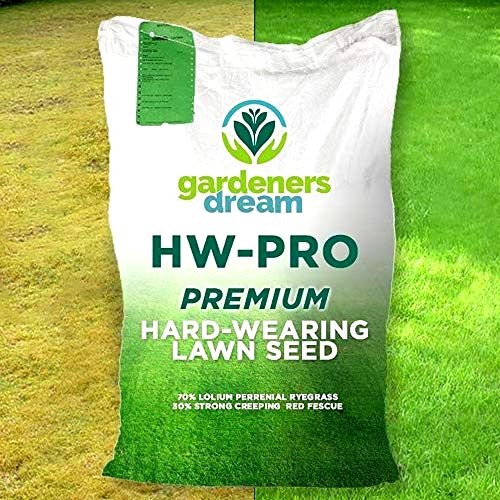
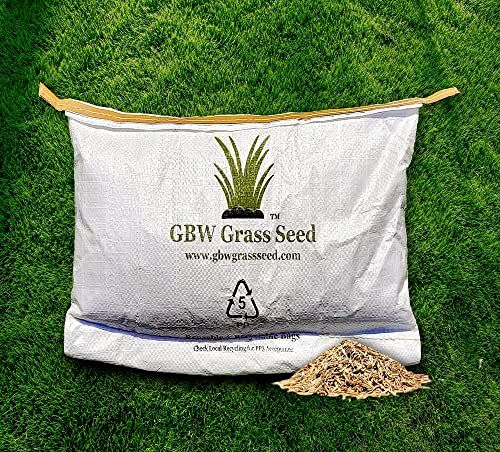
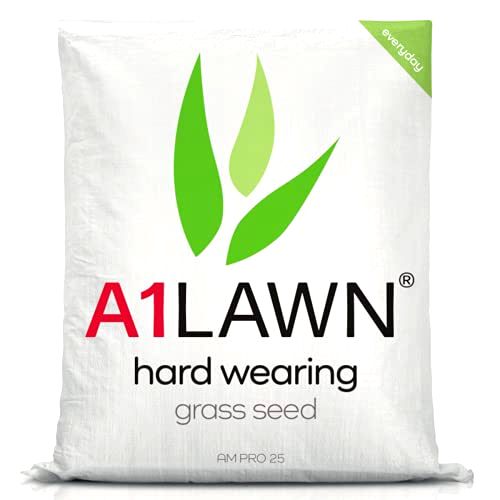
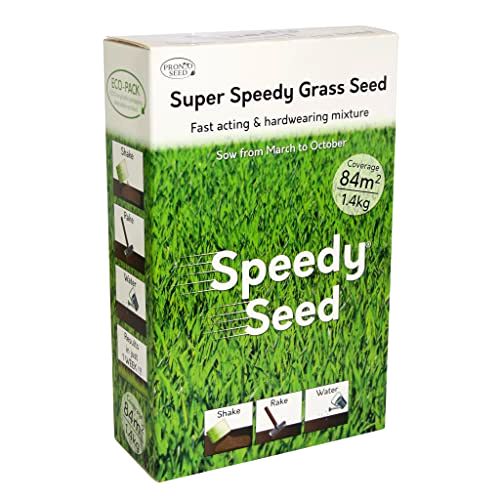
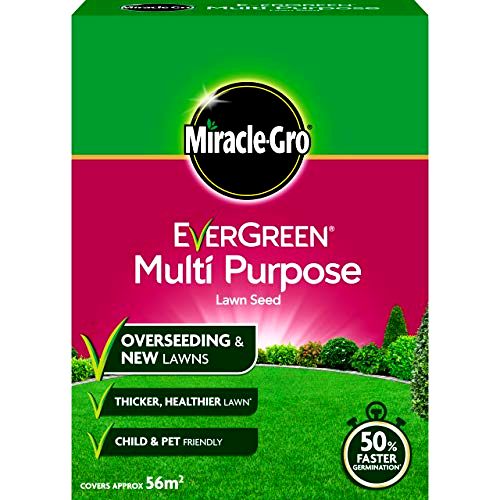
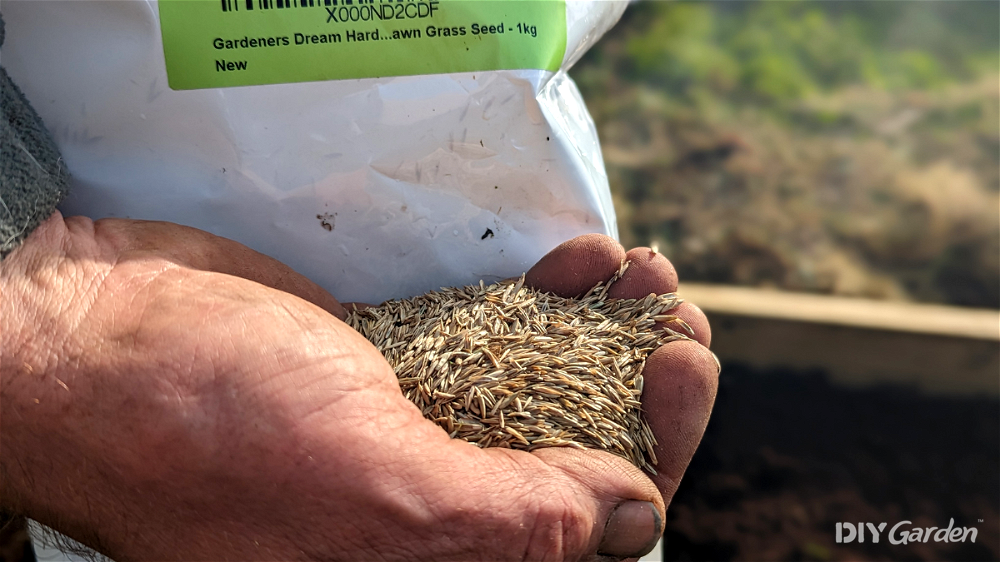
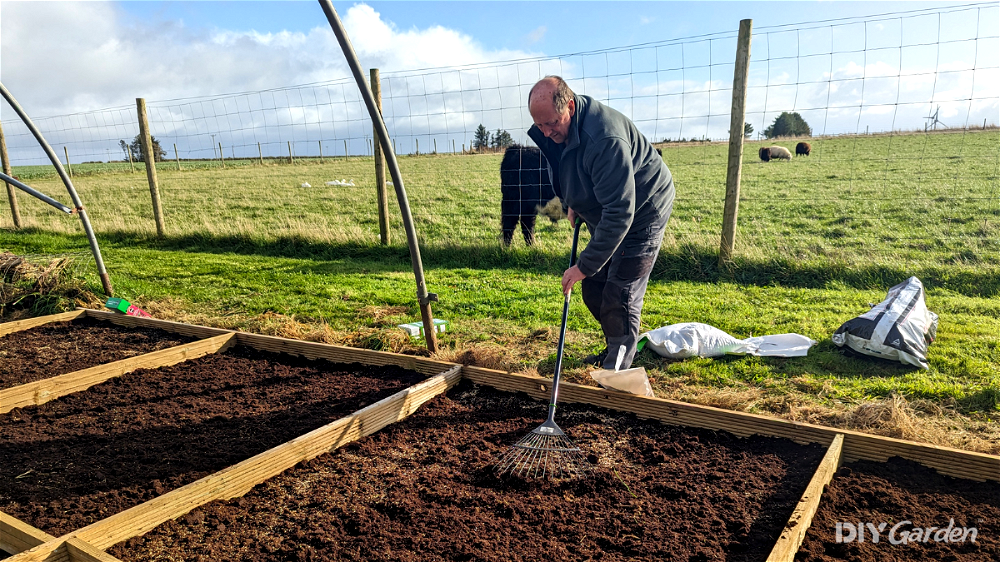
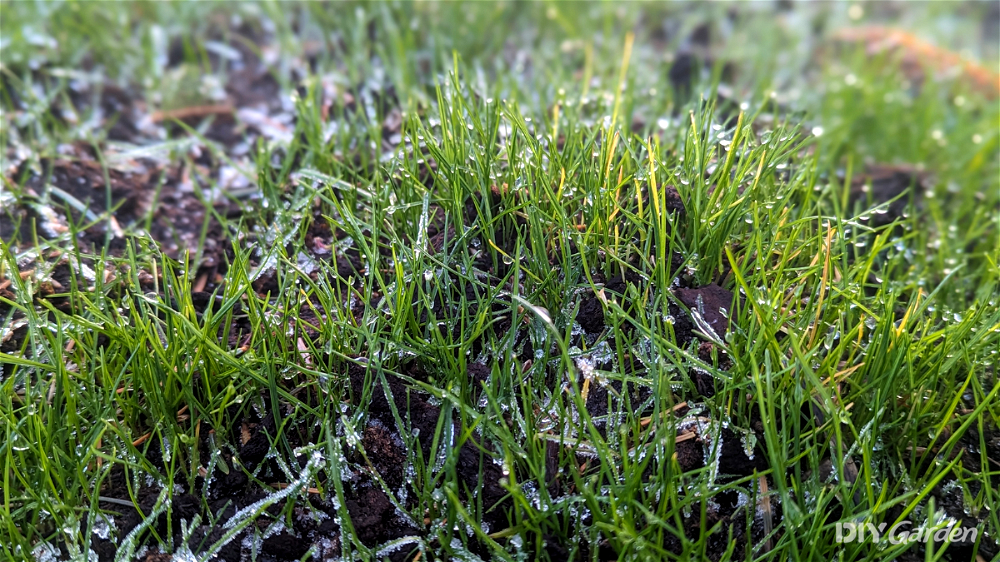
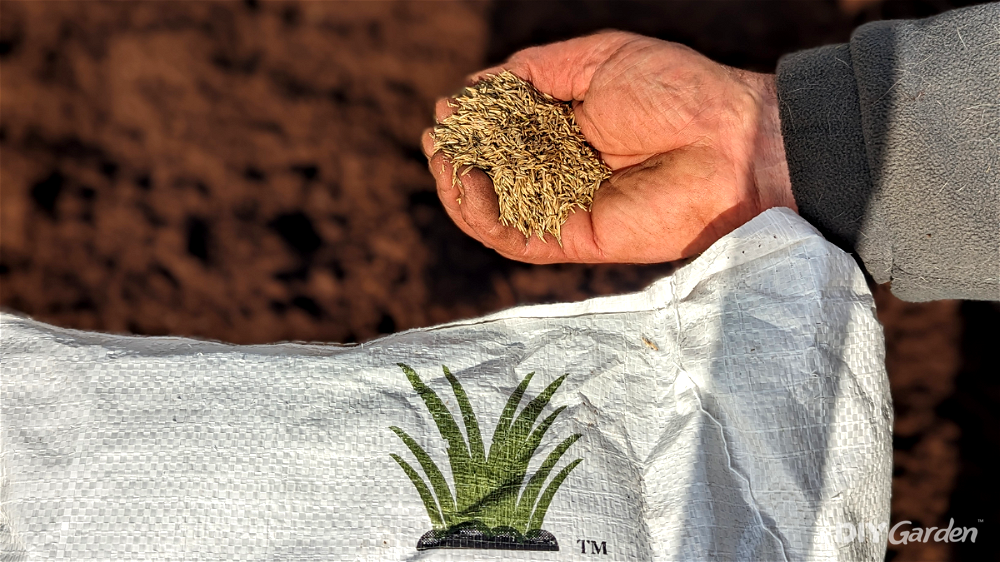
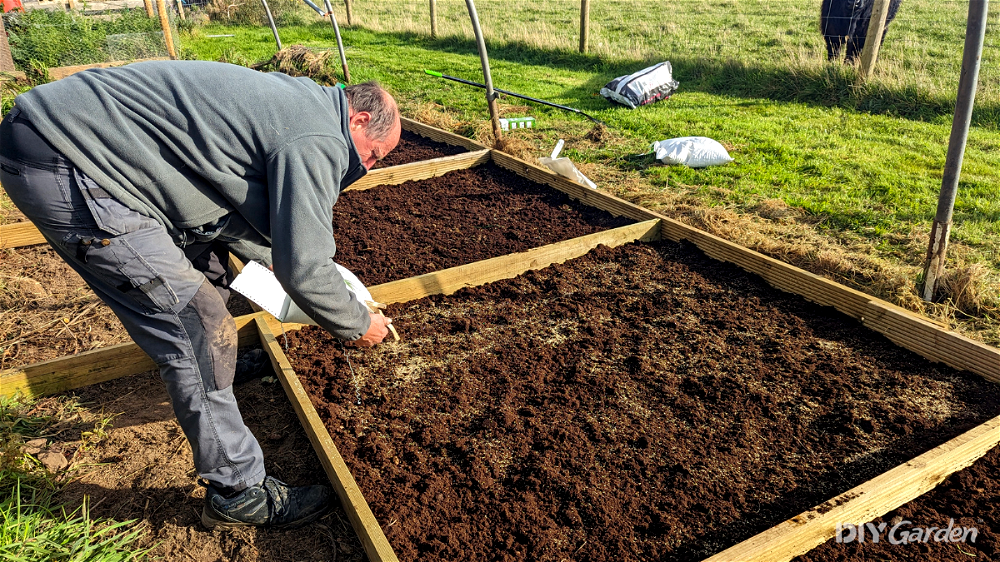
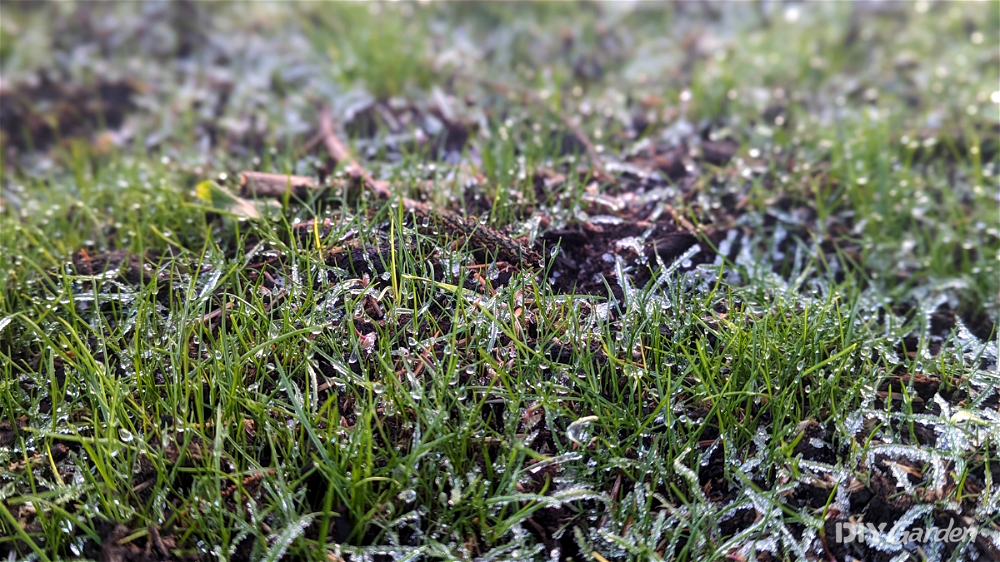
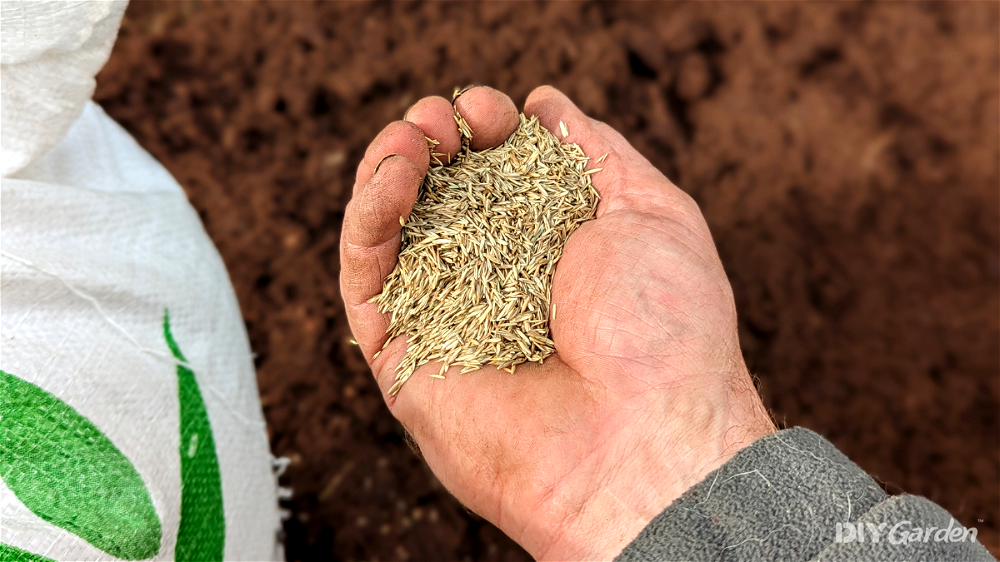
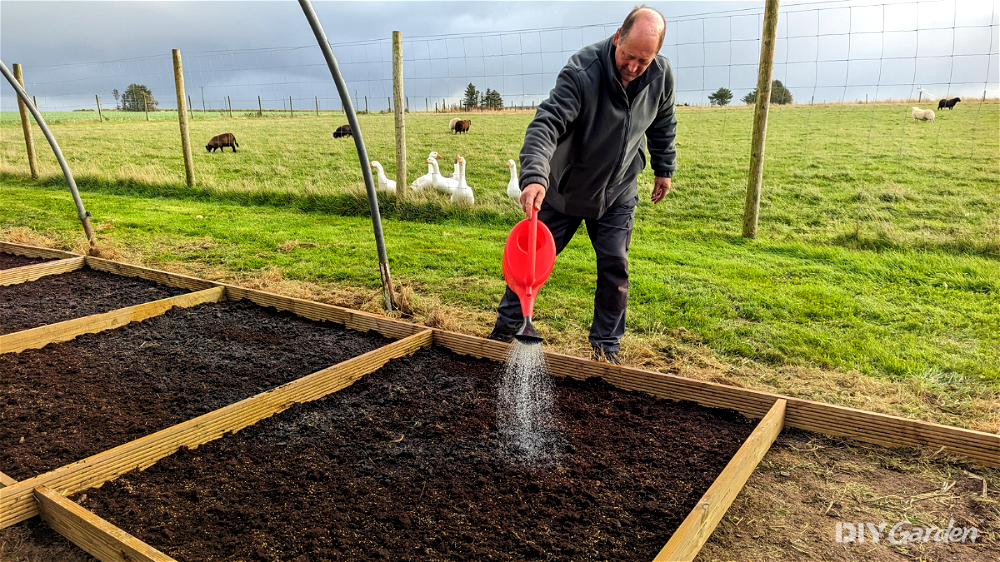
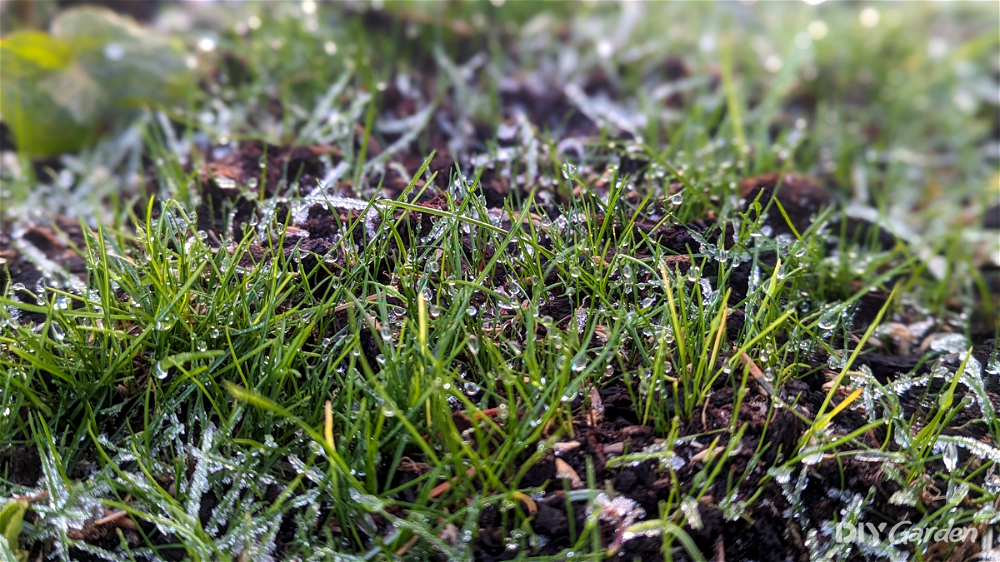
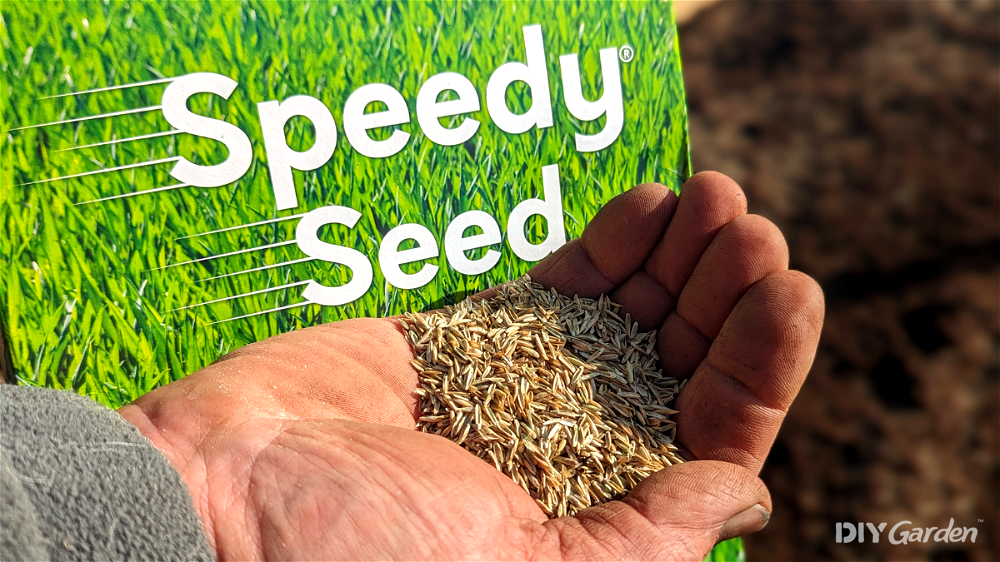
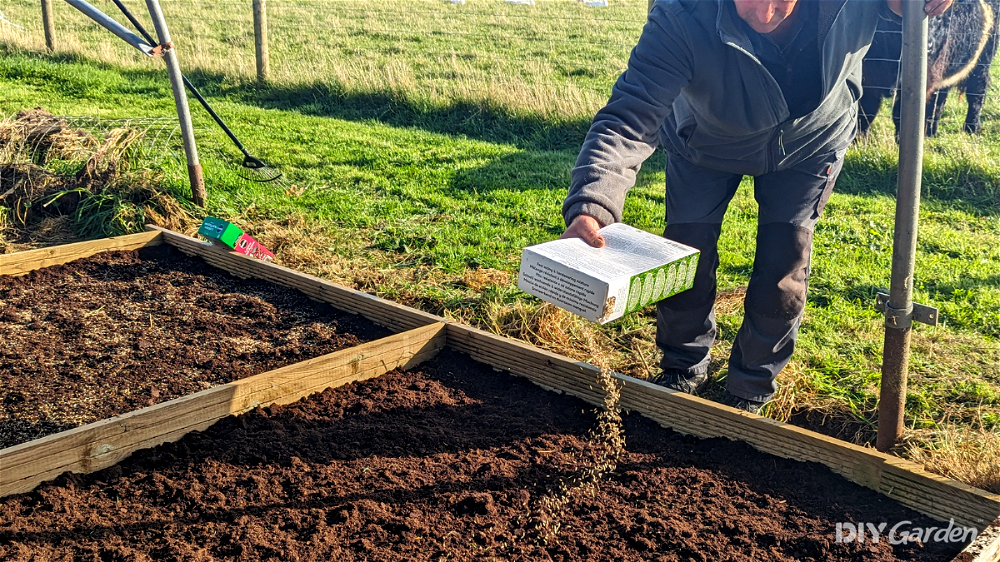
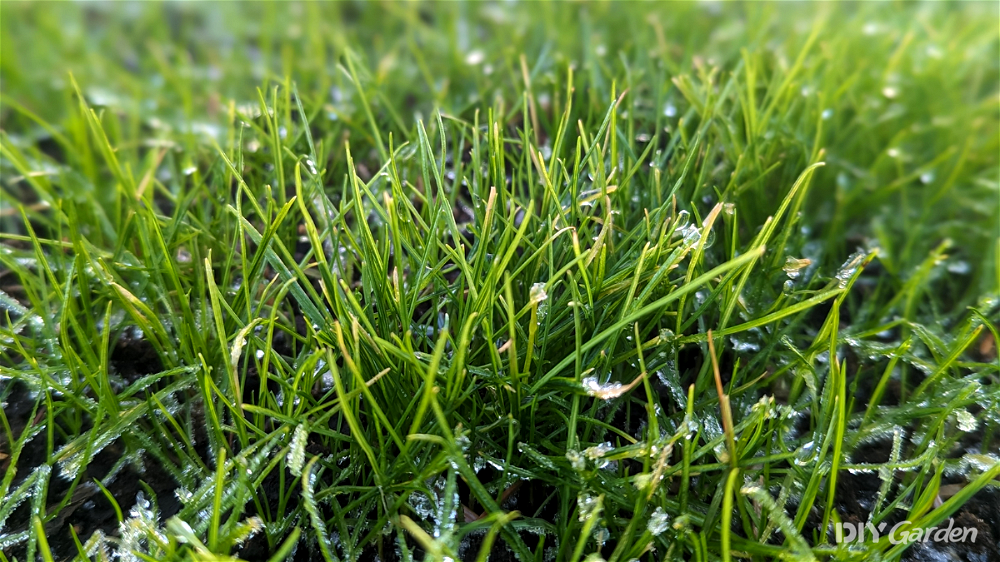
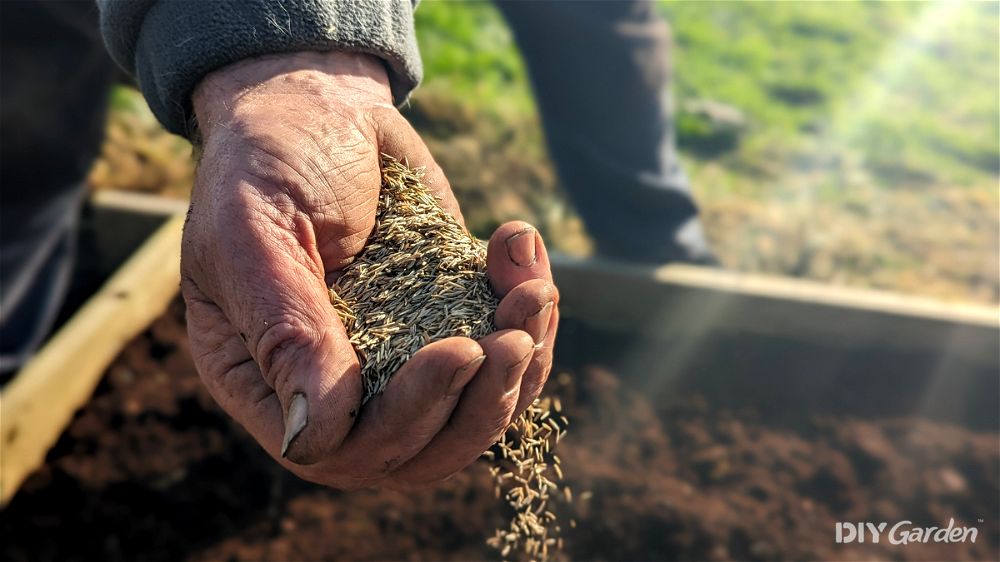
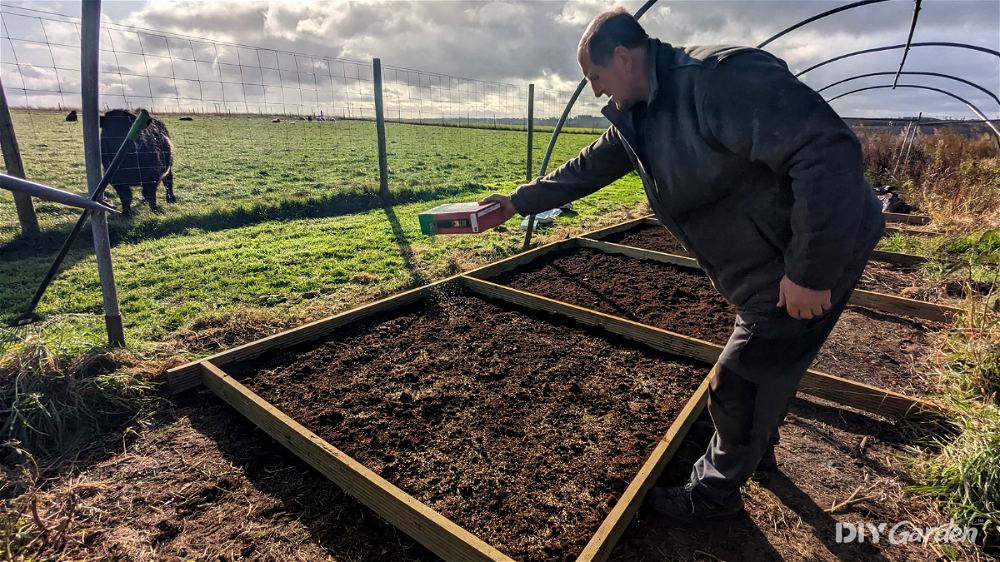
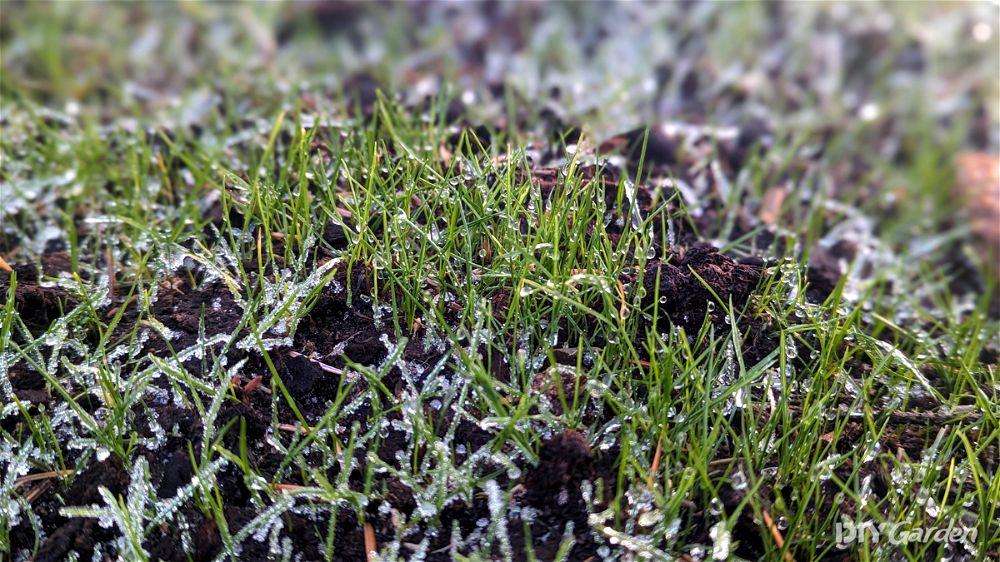
Share